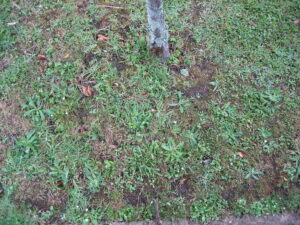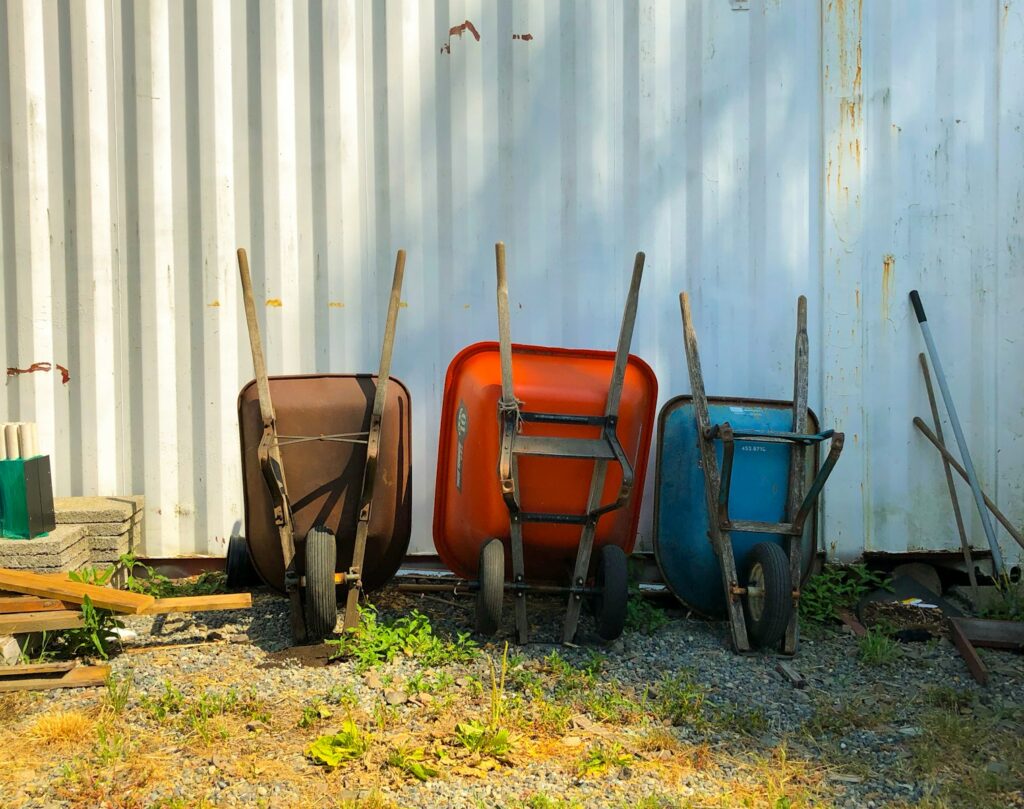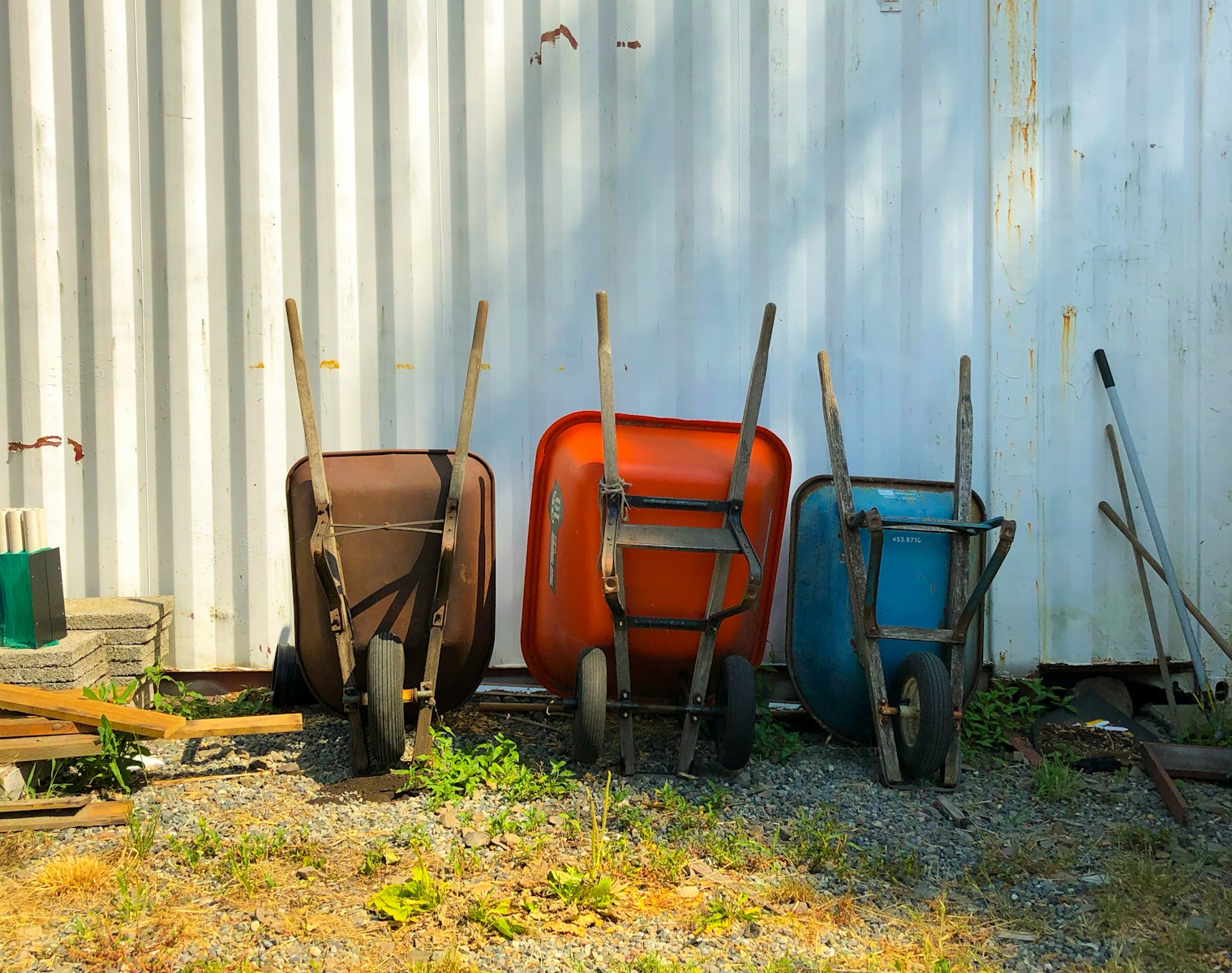Lawn dressing, also known as top dressing, involves the application of a fine layer of soil mix over a lawn. This practice promotes grass growth and improves the overall health of your top soil. To learn more about Topsoil, click this link that will bring you to another article on our website. (Topsoil) For a short summary of the content, top soil is commonly defined as the top 2-8 inches of dirt in your yard, often with a rich diversity of clays, silts, and sand. Healthy top soil is important for the fostering of organic life such as grasses and garden plants.
Why to Consider Implementing Lawn Dressing

Lawn dressing is a key strategy in improving the health of your top soil. The benefits of are multifaceted. When expertly applied, lawn dressing can aid in leveling the surface of your lawn, improving the soil structure, and optimizing the pH balance. The nutrient dense soil blends with the dirt beneath your lawn, improving soil structure and fertility, promoting healthy grass growth. These benefits are critical in Denton’s varied climate.
There are a few signs that will signal that you should use lawn dressing techniques in your yard.
- Soil Compaction: The lawn feels hard underfoot, and water tends to pool on the surface.
- Uneven Surface: Noticeable dips and bumps across the lawn.
- Thin Grass: Areas where the grass is sparse or the lawn appears patchy.
- Discoloration: Grass has lost its vibrant green hue and looks yellow or brown.
- Weed Infestation: Increased presence of weeds that thrive in compacted soil conditions.
- Bare Spots: Places where grass doesn’t grow at all.
- Soil Depletion: The lawn has not been top-dressed for several years, leading to nutrient loss.
- Insect Damage: After treating for pests, lawn dressing can help restore the lawn’s health.
- Fungal Diseases: If the lawn has had issues with fungus, lawn dressing can improve soil conditions to prevent future outbreaks.
Timing is pivotal. In Denton, the prime time for lawndressing is in the growing season, typically in the early spring or fall. This allows the grass to recover and utilize the nutrients efficiently. The application during these seasons primes your lawn to handle the hot Texas summer with ease.
There are Many Types of Lawn Dressing
- Topdressing Soil: A balanced mixture of sand, silt, and clay that improves the nutrient content of existing soil.
- Compost: Rich in organic matter, it enhances soil structure, water retention, and microbial activity.
- Sand: Used primarily for leveling and improving drainage, especially effective for heavy, clay-rich soils prevalent in certain areas.
- Custom Blends: Tailored mixtures of sand, compost, and other organic materials to address specific lawn needs in Denton, TX. Pre-packaged commercial mixescan be purchased from garden centers, specially formulated for lawn improvement.
- Pulverized Topsoil: Finely ground topsoil that is easy to spread and is good for improving the upper layer of the lawn.
- Manure: Well-rotted manure adds nutrients and improves soil structure but must be used cautiously to avoid burning the grass with excess nitrogen.
Installing Lawn Dressing
- Preparing your lawn for dressing starts with a thorough clean-up. Rake the lawn to remove any debris, fallen leaves, or dead grass that might prevent the lawn dressing from reaching the soil surface. This step is essential as it encourages better contact between the soil and the dressing, promoting more effective nutrient uptake. Ensure the grass is trimmed to a suitable height, not too short to stress the grass and not too long that it hinders the dressing from settling properly.
- The next step is to lightly dethatch the lawn if necessary, removing excess thatch—a layer of organic matter between the green vegetation and the soil surface—which can impede water and nutrient penetration. Although aeration is commonly recommended, if the soil is not severely compacted, this step can be minimal.
- Ensure any bare spots are lightly raked to create a loose soil surface, which will help the new dressing to integrate smoothly and provide a good seedbed for overseeding if part of your lawn care plan. After these preparations, your lawn is ready for the dressing, which will replenish the soil with nutrients and improve overall lawn health.
- To calculate the amount of lawn dressing required, measure the square footage of your lawn (length x width) in Denton, TX. Typically, for maintenance, you’ll need about a quarter-inch layer of topdressing material. For a standard 1,000 square-foot lawn, this translates to roughly 0.75 cubic yards of material. For corrective applications where more significant leveling is needed, you might double that amount.
- Even distribution is key to avoid smothering the grass. Begin by depositing small piles of the dressing material over the lawn area. Then, using the back of a rake or a lute, spread the material evenly across the surface. Aim to fill in any low spots and create a level finish without burying the grass. A criss-cross pattern can be useful in ensuring coverage is uniform. If overseeding, apply the seed first and then the dressing, allowing seeds to nestle into the soil.
Equipment requirements

The best tools for the job include:
- A wheelbarrow to transport your dressing.
- A shovel for distribution, a landscape rake or lute for spreading.
- A broom or brush to work the material down to the soil level.
For larger lawns, a motorized topdressing spreader can be rented to expedite the process. Remember, patience and care during application will help achieve that lush, green carpet of lawn every Denton resident desires.
Residential and Commercial Services
When the lawn spans an extensive area, or when the precision of a practiced hand is required to address underlying soil issues—circumstances where DIY approaches might fall short, you may want to consider hiring a professional. Hold Fast can help assess soil type, grass species, and environmental factors to tailor a lawn dressing blend—whether it’s for nutrient replenishment, soil structure enhancement, or leveling purposes. We can help you!

